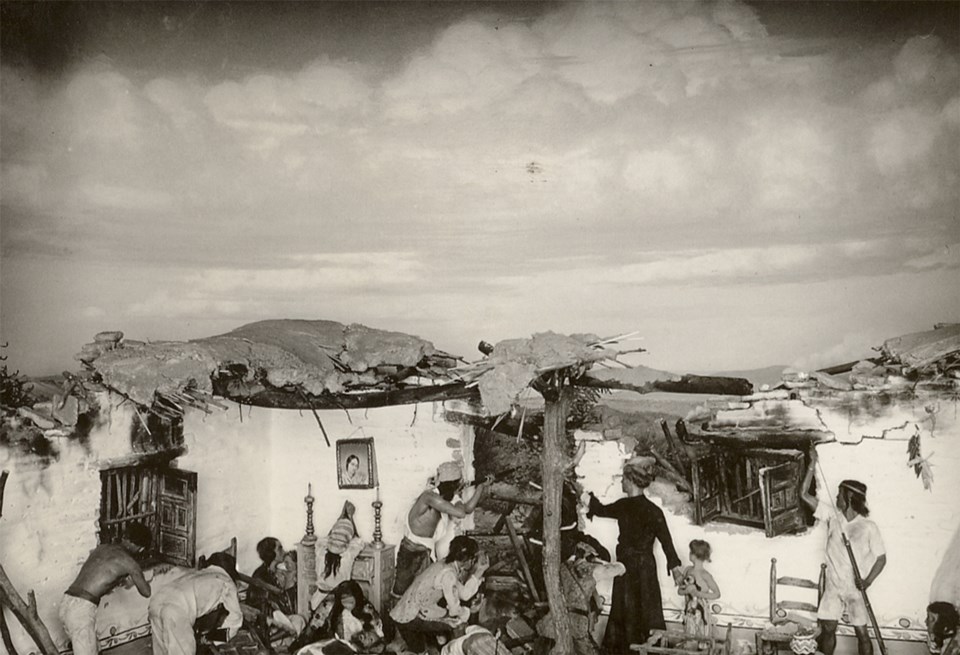
NPS Photo What are the moments that punctuate your life? That change the course of things for years or generations to come? As Jesuit Eusebio Francisco Kino and his party approached the O'odham settlement of Tumacácori in January 1691, they rode the wave of a century of expansion northward along New Spain's west coast corridor. The Jesuits had performed tens of thousands of baptisms and also become the region's most powerful social and economic force. But the tide carried them no farther north than the Pimería Alta, home of the upper Pima (O'odham). It was here that Kino founded mission San Cayetano de Tumacácori on the Santa Cruz River's east bank. The next day Mission San Gabriel was founded at Guevavi, 15 miles upriver. After Guevavi was made mission headquarters in 1701, the priest there periodically travelled to preach at Tumacácori and other visitas without resident missionaries. In 1751, some O'odham in a nearby river valley rose up in revolt and attacked the Spanish settlements there. Fearing retaliation from Spanish soldiers, those at Tumacácori fled to the hills. As a result, a 50-man presidio was founded at Tubac, and the mission at Tumacácori was resettled on the west bank. In 1767 King Charles III of Spain, for political reasons, abruptly expelled the Jesuits from all his realms. The Franciscans, who took over the missionary effort in Pimería Alta, inherited the woes that had frustrated the Jesuits: restless neophytes, Apache hostility, disease, encroaching settlers, and lack of government support. The Tubac garrison was transferred to Tucson in 1776, and by 1786 only a hundred people remained at Tumacácori. The next year an 80-man O'odham company reoccupied Tubac, but as Apache pressure mounted, the nearby missions of Calabazas and Guevavi were abandoned. About 1800 Fray Narciso Gutiérrez began to build a large church to replace Tumacácori's modest Jesuit-era structure, but his mission's poverty and the Mexican wars for independence slowed construction. When a Mexican decree forced all Spanish-born residents to leave the country in 1828, Tumacácori lost its last resident priest. Scaffolding still clung to the bell tower. The community and a few settlers, with the aid of visiting native-born Mexican priests, hung on for another 20 years, but a series of Apache raids and the hard 1848 winter drove the last residents from Tubac and Tumacácori. The 157-year thread of continuity begun by Father Kino was now severed. Timeline of Significant Events1572Native people kill pioneering Jesuit missionaries in Florida and on Chesapeake Bay. These failures, and a rebellion at a mission in what would become Carolina, cause Jesuits to shift efforts to New Spain. 1687Father Eusebio Francisco Kino is first Jesuit missionary permanently assigned to the Pimería Alta. 1691Father Kino visits Tumacácori and Guevavi at request of O'odham from those villages and San Xavier del Bac. The Father Visitor there with Kino, impressed by this tribe and their land, decides to expand the missionary effort there. 1749At Guevavi, in February and March, disease kills nearly two neophytes daily. 1751Pima Revolt: A coordinated O'odham rebellion erupts across the Pimería Alta. More than 100 people are killed and property destroyed at several missions. Tumacácori and Guevavi are temporarily abandoned. 1753In response to the revolt, a presidio is built at Tubac, and Tumacácori is moved to the west side of the river. Name is changed from San Cayetano de Tumacácori to San José de Tumacácori. 1757New missionary guides community in completion of a small church that serves for 65 years. 1767-68Jesuits are expelled from New Spain. Franciscans are assigned to former Jesuit missions. 1771Mission headquarters is moved from Guevavi to Tumacácori; for the first time the mission has a resident priest. early 1770'sFranciscans redecorate church, build adobe dwellings for the O'odham, and wall-in the mission. circa 1800Franciscans begin building larger church. Lack of funds soon brings construction to a halt. 1801A June Apache attack nearly wipes out all of Tumacácori's livestock. 1821Mexican Independence: Church construction resumes, but Spain withdraws aid to missions, and the work ceases. 1823Final phase of church construction begins. 1828Mexico orders Spanish-born residents to leave the country. Only the native-born Mexican priests are left to care for missions, causing an extreme shortage of priest administrators. Tumacácori becomes a visita again. 1848War with Mexico cuts supply lines. The Apache increase attacks, and the winter is extremely cold. In December soldiers abandon Tubac; the last residents leave Tumacácori. 1853Gadsden Purchase: The Tumacácori site becomes part of the United States. 1908President Theodore Roosevelt proclaims Tumacácori National Monument on 10 acres of land donated by local homesteader Carmen Mendez. 1918First custodian (Frank "Boss" Pinkley) assigned to Tumacácori. Clean-up and stabilization begins a year later. 1935Two Franciscan priests are disinterred from Tumacácori and reburied at San Xavier. 1937Visitor Center and Museum are built according to traditional mission style as observed in northern Sonora. 1990Congress creates Tumacácori National Historical Park which includes the old monument land and the missions of Guevavi and Calabazas. 2002Approximately 310 acres of neighboring land is authorized by Congress to be added to Tumacácori National Historical Park. This includes the historic orchard area, one mile of Santa Cruz River corridor, and a section of the Juan Bautista de Anza National Historic Trail. |
Last updated: February 4, 2025
